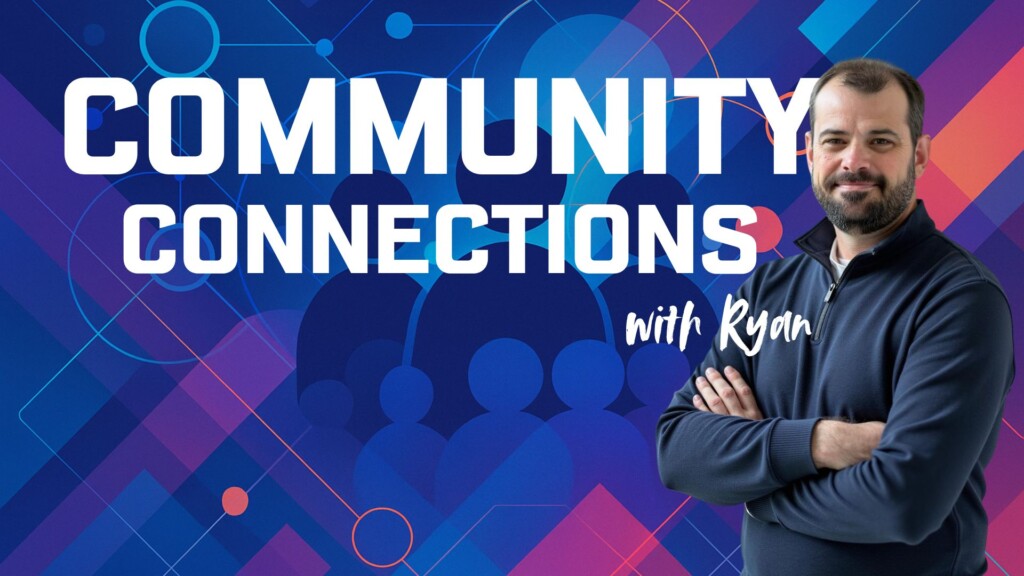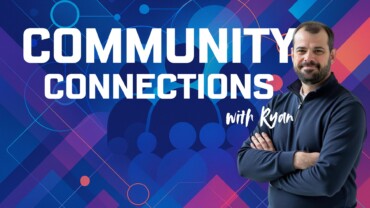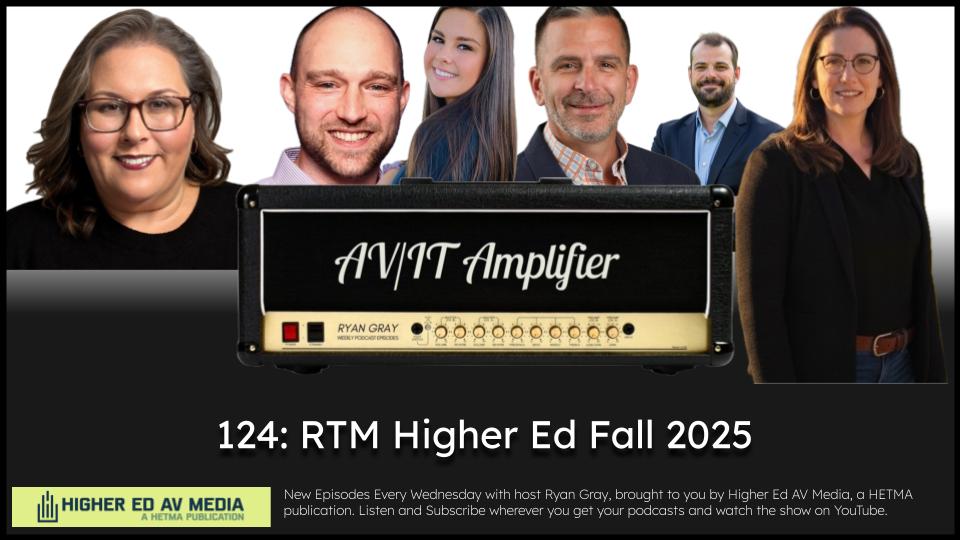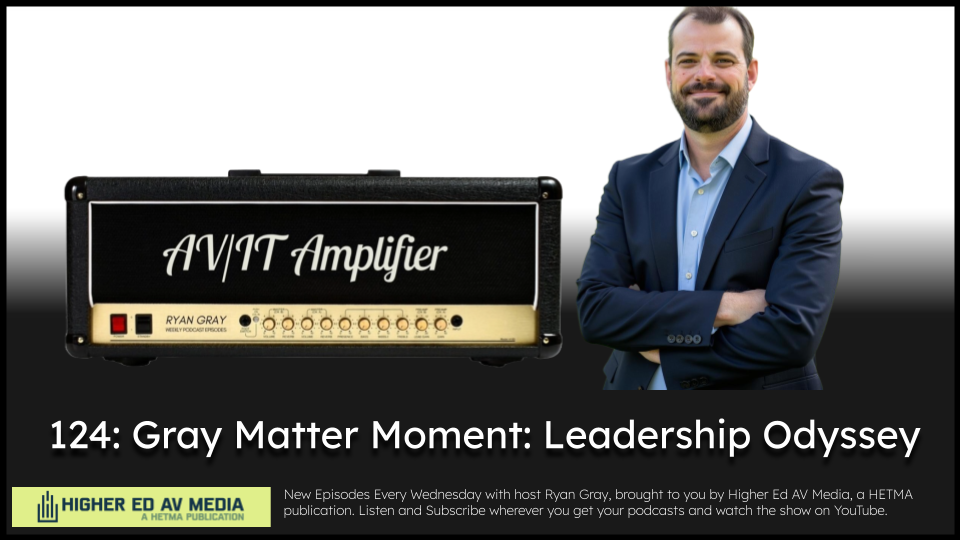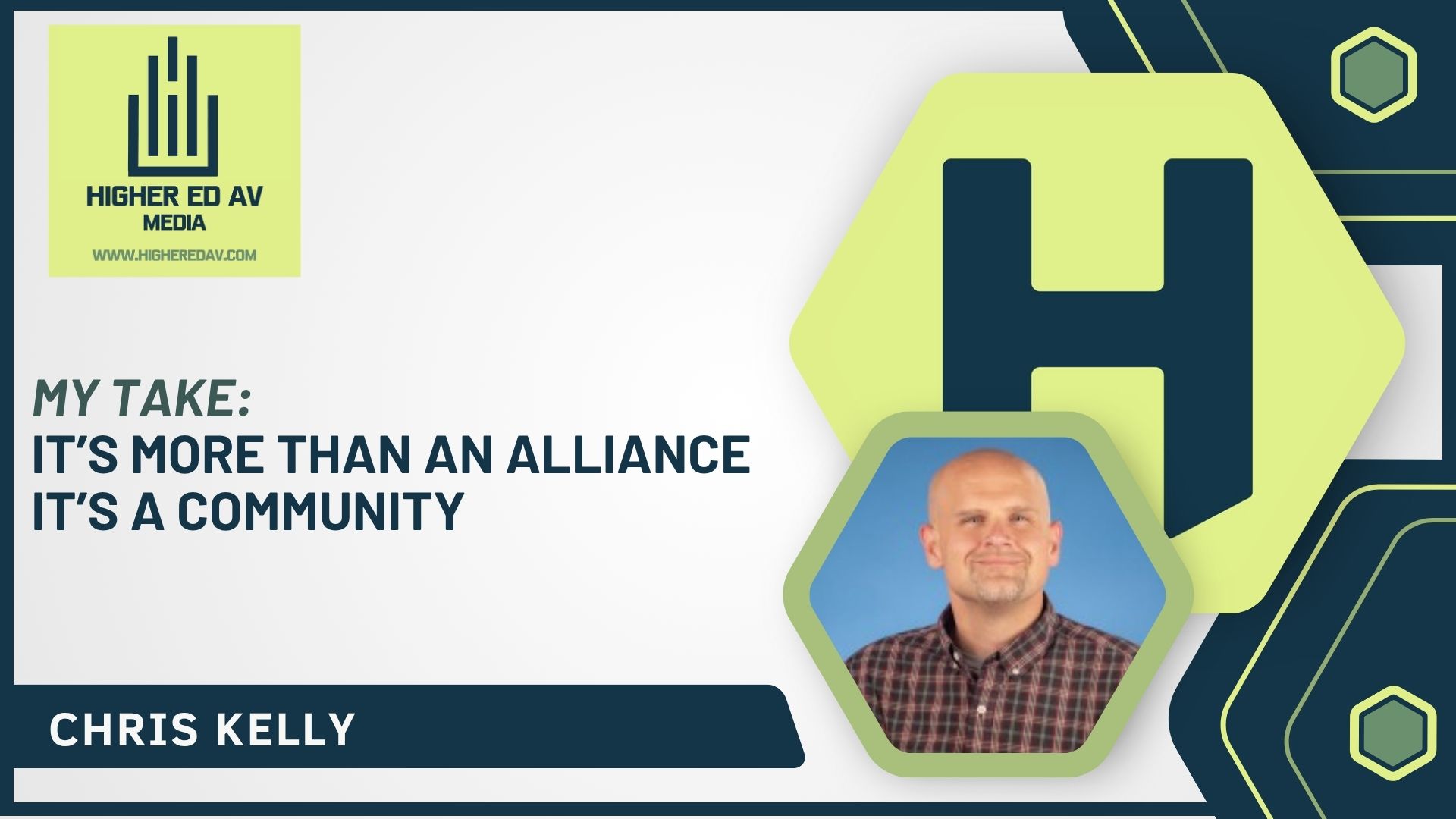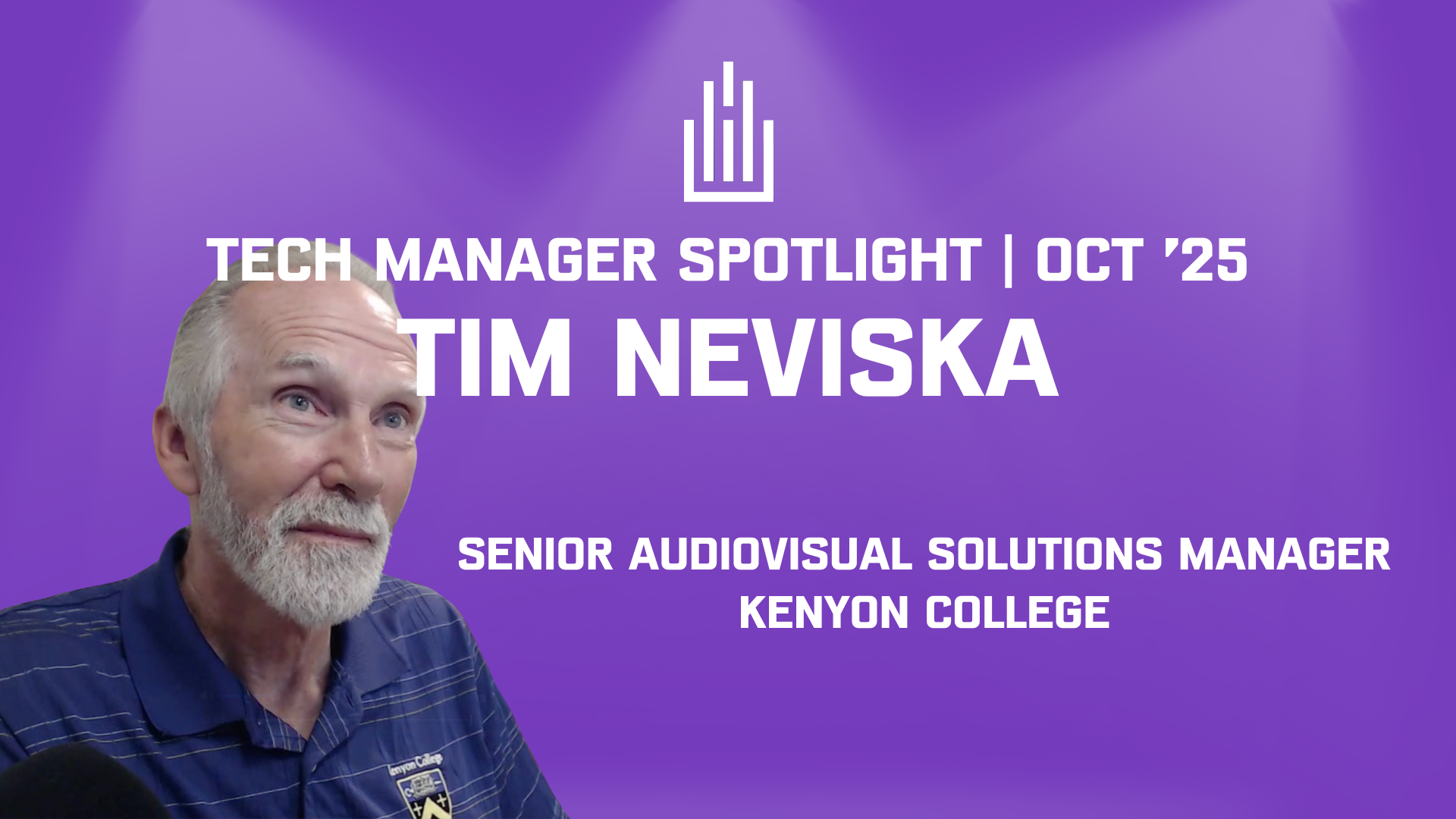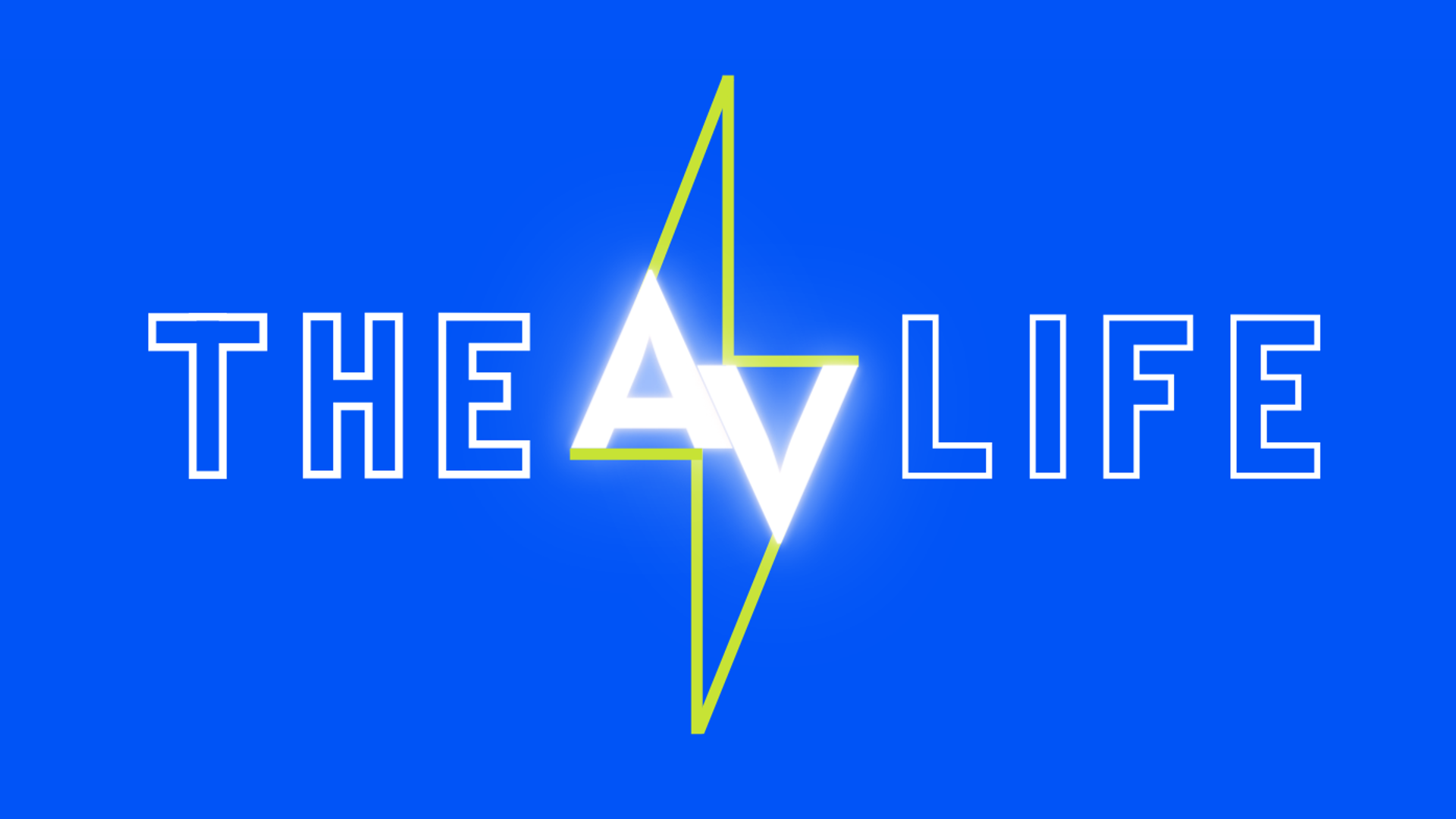What happened to 2004? Well, I’ll tell you.
By Ryan Gray
Who here’s heard of Rolla, MO? It’s ok if you haven’t but it’s become kind of a special place for me. Now.. I’ve only been there twice—once when my youngest brother, Evan, was suiting up at what was then UMR: The University of Missouri-Rolla, and again two weeks ago to celebrate his induction into the Athletics Hall of Fame at what is now called Missouri University of Science and Technology. Same campus, very different season of life. And what stuck with me wasn’t the highlight reel or the hardware. It was how in his induction speech he said the quiet part out loud.
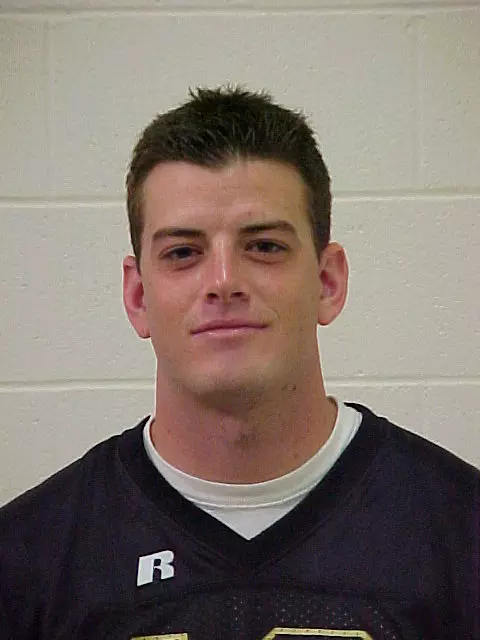
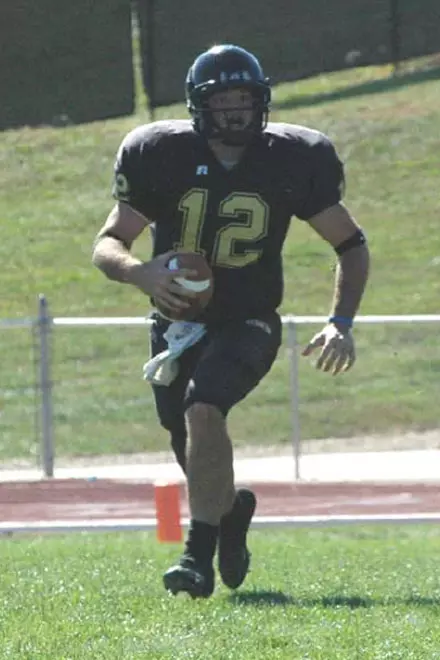
Evan opened his remarks with a wink to the scoreboard keepers: “You will notice that my playing years were 2003 and 2005… ‘Well, what happened to 2004?’ Well, you’re in luck—I’m going to tell you.” That line is the center of gravity. Not because it’s clever, but because it names the gap most of us might try to skip when we tell our stories.
what happened to 2004?’ Well, you’re in luck—I’m going to tell you
He arrived in Rolla like so many competitors do: hungry to keep playing, confident he could help a team. He hustled up his own shot, sent the tapes, took the risk, said yes when a path cracked open. And then Missouri S&T did what serious academic institutions do—it put the word student first. “In my first year as a student-athlete here, I was all in on the athlete part but not so much on the student part.” The verdict came quick and clear: his future at the institution was in jeopardy.
That could have ended up ending like so many others we’ve heard about college students struggling with grades. But as Evan met with coaches, staff and faculty, he sat across the table from just enough allies to make sure he’d get a second chance. Not a ceremonial one. A structural one. “I still had a redshirt year. I would move from being the starting quarterback to a student coach… and would move into a support role that included fun tasks like doing laundry for the football team on the loop—which I know all about that.” That’s what another chance often looks like up close: belonging with expectations. No pads. No snaps. Just humility, accountability, and time to reorder what matters.
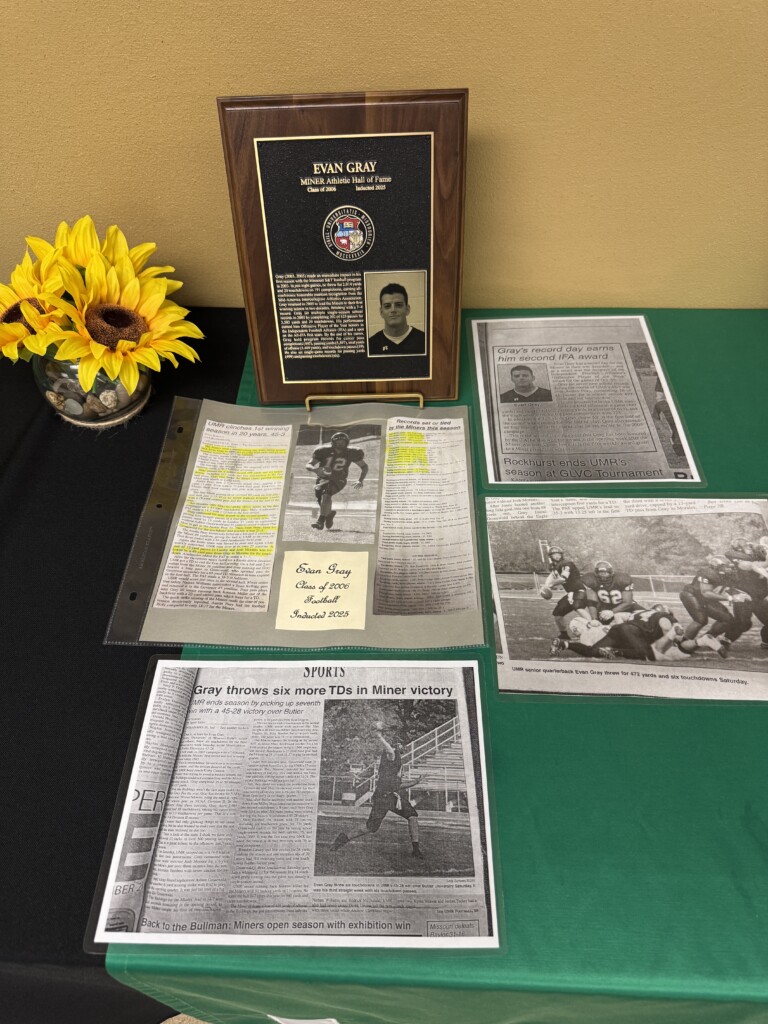
He did the work. “I had to make some big changes in my priorities,” he said. “I had to dig my way out and prove… that the potentials they saw in me were real.” By spring he was back on the field. By fall, the team believed they couldn’t be stopped, and they played like it. Yes, the record book changed. But he made sure to name the deeper headline: Missouri S&T’s first winning season in twenty years. The plaque explains the stats. The speech explained the person.
I had to dig my way out and prove… that the potentials they saw in me were real.
If that were the whole arc, it would already be enough. But he didn’t leave the lesson on the turf. Today, as Associate Director, Student Success at University of Arizona Global Campus, Evan leads teams that build co-curricular support for all students, those doing well and those who are near the end of their rope—the ones standing in their own “2004,” not sure if they still belong, not sure if anyone believes they can turn it. He told the room plainly: there are moments in life “in which we need a second chance, and we need people to believe in us. Be somebody that believes in others and helps them reach their full potential, because you never know where that might take them—maybe even the Hall of Fame.”
https://www.uagc.edu/student-experience/peer-mentoring
It’s one thing to say that into a microphone on an induction weekend. It’s another to live it as your daily mission. He’s spent his career meeting students where they actually are, not where we wish they were for the sake of our brochures. He’s taken the wisdom of his own gap year and turned it into muscle memory—systems and touchpoints and relationships that keep students tethered to purpose while they rebuild capacity. That’s not soft. That’s the most rigorous kind of care.
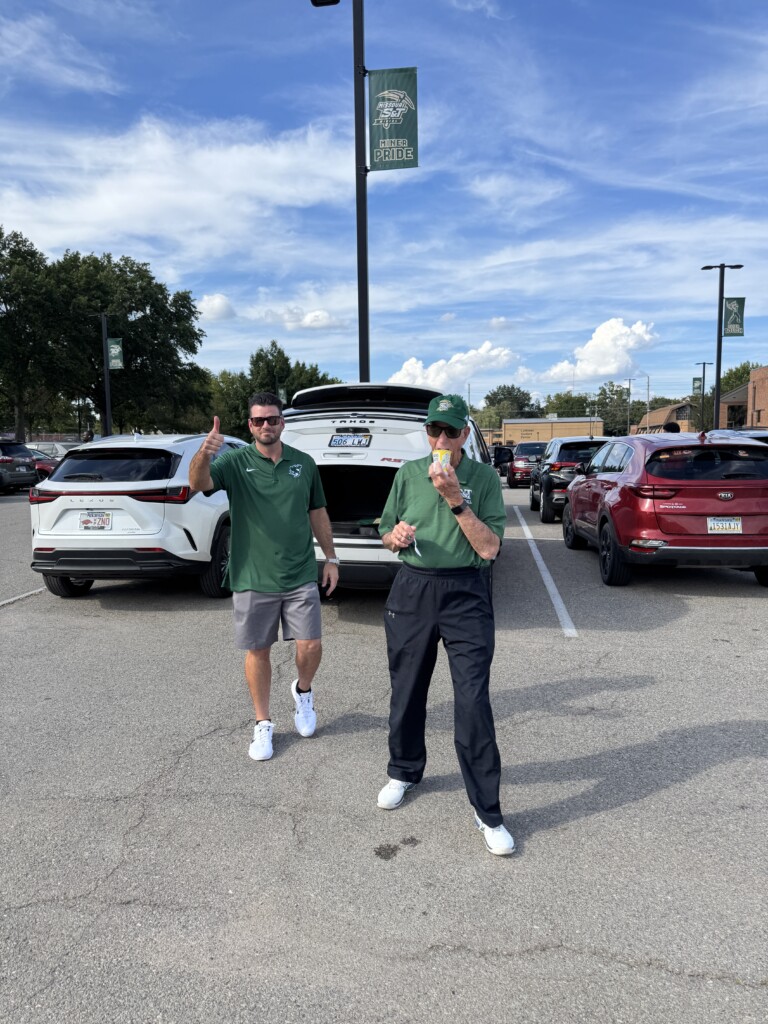
And that’s where this story stops being just a family celebration and becomes a mirror for our work in higher ed.
We say we’re student-centered. Do our decisions read that way when the story gets messy? When an athlete miscalculates the “student” part of student-athlete? When a transcript dips below a line the policy says we cannot cross? When the reputation anxiety shows up in the meeting and whispers, Protect the brand? When something is a little late? When making the exception means a little more work for us?
Because there’s a real cost to getting that calculus wrong. Every time we choose image over a student’s trajectory, we risk quietly depriving the world of a future Hall of Famer—on fields, in labs, in startups, in community clinics, in classrooms. We don’t get to see the degrees conferred, the living wages earned, the families steadied, the companies founded, the neighborhoods changed. We just keep our dashboards tidy and call it standards.
What if standards and second chances aren’t opposites? What if standards actually require second-chance design—precisely because learning is lumpy, development is non-linear, and potential rarely arrives pre-sorted into our timeframes? Evan’s “2004” wasn’t an asterisk to be edited out of the story. It was the story. It’s where enough people in the community said, You still belong here—now let’s match your effort with the help you need. It’s where help met work. It’s where belonging was paired with accountability. It’s where the future widened.
You still belong here—now let’s match your effort with the help you need.
One of the things I love about his talk is how ordinary the details are. The laundry loop. The bus rides. The film sessions. The spring game. The cooks who fed them after practice. None of that makes a sizzle reel. All of it makes a life. That’s where most second chances actually live—not in grand gestures, but in the everyday architecture of people who decide to stand in the gap and stay there long enough for growth to take hold.
I also love the full-circle texture of it. If he hadn’t stayed, he wouldn’t have met Jamie on that campus. He wouldn’t be the dad giving his son a tour of the same field years later, almost ready to throw a pass he knows his shoulder won’t love. The ripples from a single yes—his yes to stay, their yes to keep him—are still moving. That’s the part we never see on spreadsheets. That’s the part that makes this work holy.
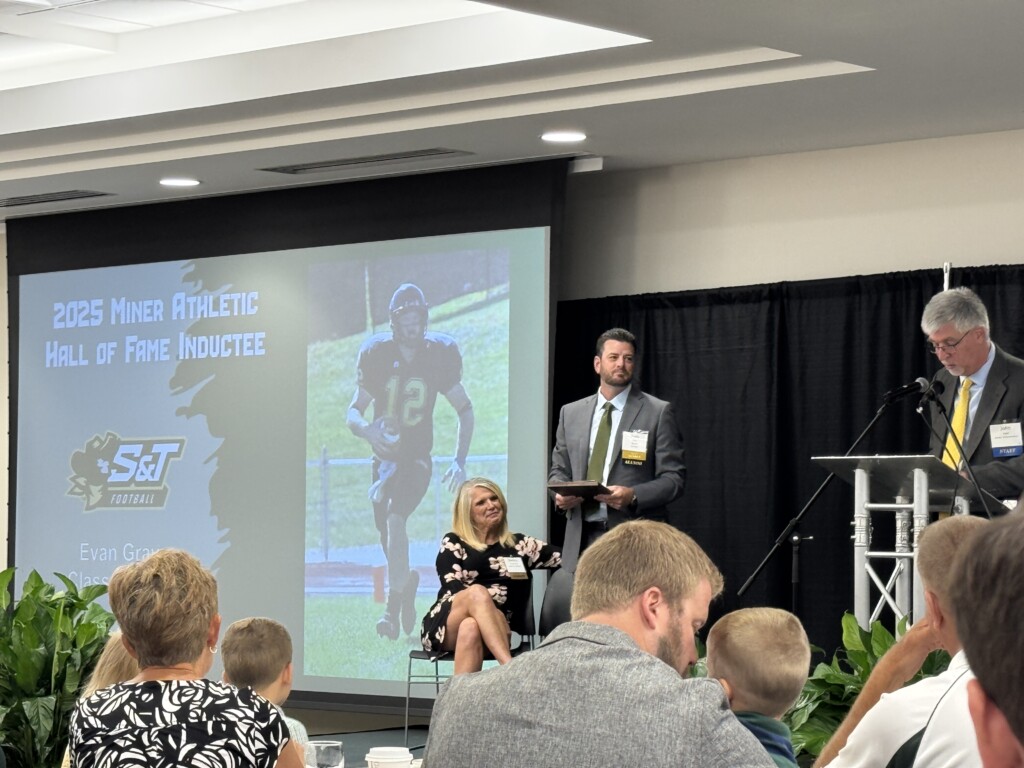
So when I think about “What happened to 2004?” I think about a student who stayed and a university that stood with him. I think about advisors and coaches and staff who could have protected the institution’s image and instead protected its mission. I think about how that quiet courage doesn’t just save a semester; it seeds a vocation. Evan’s career is proof. He didn’t just receive a second chance; he built a life out of handing them to other people.
If you watch the video or read the transcript alongside this column—and you should—listen for how deliberately he shifts the spotlight. He doesn’t center his own accomplishments. He centers the people who believed in him and the team that broke a twenty-year drought together. He centers the students he now serves. It’s humility with a spine. It’s gratitude with agency. It’s what “student-centered” looks like when you strip it of slogan and build it into practice.
It’s humility with a spine. It’s gratitude with agency
We can’t fix every story. Not every risk will pay off. But the ones that do rewrite families and communities and, yes, record books. The ones that do produce the kind of alumni we want to point to when we say, This is who we are. If our policies and habits make it easier to say no than to stand with a student through their 2004, we should expect fewer of those futures—and we don’t have the luxury of that loss.
You never know what grows from a second chance. That’s the math I carried home from Rolla: grace plus standards equals futures. It’s simple, and it’s hard. It asks us to trade a little institutional comfort today for a bigger human story tomorrow. I’ve seen what that trade yields, up close. I’ll take those odds.
I’ll leave it there. The video and transcript are below. Hear it in his voice. Let the missing year sit with you a minute. And then ask the question I’m asking myself: Who’s living their 2004 on our campus right now—and will they find us standing with them when they need it most?
Who’s living their 2004 on our campus right now—and will they find us standing with them when they need it most?
Well, good afternoon. It’s truly an honor to be back here in the Heaven Center. In case any of you were wondering my age, I was here when the Heer Center was first being constructed. This was the new fancy building. And I think Ashton, who’s in the back, would agree with me that you learn a lot of lessons in college—no more than becoming good friends with the cooks down there at Chartwells. So when you get done with practice, you can go down there, get your food before film with Coach Cove. That was probably one of the main memories I have of being in this building. I also want to thank Melissa, Susan, Patty, John. It’s so good to see familiar faces. All of you—if you know—we walk in the office and see a smiling face and a hug, and a lot of that’s true today. So that’s awesome just to see you all. Mark, it’s good to see you as well and appreciate all the support that we had while you’re there. And it’s just really good to be back in Rala.
Twenty-three years ago, I was sitting in a computer lab on the campus of Arizona State University trying to figure out where my college football journey was going to go. I had completed my first two years of junior college football and had spoken with a few schools, but let’s just say I wasn’t turning down NIL deals left and right, Mark, so you can be safe with that. No one was paying me to be here. So I knew I really had to take that in control and figure out what my next steps were going to be. During those years, there was a website called joofootball.com. I decided to throw a Hail Mary and just email their general email address and simply asked what school is looking for a transfer quarterback.
I didn’t know it when I sent it, but then 30 minutes later I got a one-sentence reply. It just said simply, “D2 Missouri Raleigh is looking for a quarterback.” That’s all it said. I began to quickly research the university, the MIAA—MIAA—and thought, why not? I’m going to give it a shot. My dad and I had made VHS tapes—for you youngsters in here, it’s like streaming, that’s what that is—but we had made highlight tapes of the time that I had at Phoenix College. Thought, why not? Let’s give it a shot. So I dropped it in the mail. And as they say, the rest is history, and here I am today.
On the plaque on the Hall of Fame and in the production for this weekend, there’s one piece to that that I want to reflect on, which is the real reason why I’m up here today. You will notice that my playing years were 2003 and 2005. So I’m sure some of you have already thought to yourself, “Well, what happened to 2004?” Well, you’re in luck—I’m going to tell you.
In my first year as a student-athlete here, I was all in on the athlete part but not so much on the student part. As this entire room knows, at Missouri S&T, no matter how well you throw a football, put the ball in the back of the net, how many spikes or good sets that you have, the student part always comes first. I’ll never forget the day I got a call from my adviser letting me know that I was no longer in the school of business. My future at this institution was in jeopardy. And after several conversations with coaches, my faculty leaders, I learned that I was going to be given a second chance.
I still had a redshirt year. I would move from being the starting quarterback to a student coach, which meant I would not be allowed to practice and would move into a support role that included fun tasks like doing laundry for the football team on the loop—which I know all about that.
Through this experience, it was clear if I was going to get back on the field, if I even considered graduating from this university, I had to make some big changes in my priorities. I had to dig my way out and prove to myself, my family, my coaches, my instructors that the potentials they saw in me were real and I could do it. And I did. I focused on my education, both in the classroom and my understanding of the game, and by the time our spring game was there that following semester, I was back on the field, and the stage was set for my return to my senior year in 2005. The stars aligned that year for our team. On offense, we truly believed we could not be stopped, and individually and collectively we rewrote the record books—but more importantly, we achieved the first winning season in 20 years of this school’s history, which is an honor that far supersedes any individual record or honor that I might be getting here today.
In my current role as the associate director of student success for the University of Arizona Global Campus, I oversee teams that facilitate our co-curricular programming to support students outside of the classroom. I use my experience here in Rala and have forged a career to support college students that are in need of help and, in many cases, have nearly reached the end and are in need of a second chance. It’s my encouragement to everyone here this afternoon to remember that there are times in life in which we need a second chance, and we need people to believe in us. Be somebody that believes in others and helps them reach their full potential, because you never know where that might take them—maybe even the Hall of Fame.
To my coaches, Kirby Cannon and Mark Cobb, thank you for always believing in me when I needed it the most and not giving up on me. Coach Cobb’s showtime offense was the most fun I’ve ever had playing football, and I appreciate all he did for me on and off the field. I’d also like to thank Coach Ball, our current coach. We had the opportunity to coach together in 2007, and it’s been amazing to see what you have done with this program over the years. I actually got a chance to go out on the field this morning and kind of talk about old times and relive and talk to the team and bring my son Cooper out there and my dad, and I’m telling you what, I was almost ready to go. I don’t think I can throw it like I did, but it was just awesome to be out there, and I’m really looking forward to the game tonight.
To my former teammates—and Ashton’s here tonight, kind of representing that group—I really appreciate you being here. I know it’s a busy time; you’ve got a growing family. But I loved my time playing with you and all the other teammates. As much as it was trouble, as I look back, I love those 15-hour bus rides. Absolutely destroying Golden Corral on a Thursday night in Jeff City. Kyrie Weaver, I hope you’re watching out there—the twinkle in your eye at seafood night on Thursday, knowing what you were going to do, is truly inspiring. I really miss those days. And as the years have gone by, it’s just been amazing to see so many of my teammates and see what they have been able to go on and do, and how they’re leaders in their organizations, leaders in their communities. I’m certainly looking forward to spending time with some of my teammates that are on their way here this afternoon.
I want to say thank you to my family that are here today—Ryan, Molly, and Maddie. I admire you all so much. My brother Ryan is a senior leader at Yavapai College in Prescat, Arizona. My sister-in-law, Molly, is also a senior leader at Arizona State University. And my niece, Maddie, is also an engineer—aerospace engineering at Arizona State—entering her junior year. And as true engineer status would go, last night after we had some dinner, she had to go back and take a quiz. Just like those bus trips and things when you’re middle of the semester, you do what you do to get it done. I really appreciate you all being here and for all the love and support.
To my parents, Larry and Shelley—I don’t even know where to begin to say thank you for the unconditional, unwavering love you have shown to me and my brothers. My mom, Dr. Shelley Gray, just retired from Arizona State University after a decades-long and decorated career. She is a wonder; she is a worldrenowned leader in speech and hearing sciences, and her work ethic is second to none. Mom, thank you for teaching me hard work, for teaching me how to love and forgive, and for all the sacrifices you made for our family. I don’t know the number of ball games you attended over the years between me and my brothers, but I just know it was a lot. Most importantly, Mom, thank you for taking us to church when we were young and continuously showing us and those around you how to live by faith. I love you, Mom.
To my dad, I’ve always wanted to be just like you, and that is as true today as it was when we were little. I fell in love with football on Friday nights at Morirana. I fell in love with golf on Sunday afternoons at Tucson National—all because I got to spend time with you. You have been there for me every step of the way and have taught me how to be a father, a husband, a friend, and a person in the community that others can rely upon. As I think about the seasons of life, the one thing that’s been constant will be the hugs from you—hugs of celebration and joy after Miranda Mountain View games and hugs when I just needed it the most and just needed to know that you love me and that you would help me. The good Lord blessed me when he gave me a chance to be Larry Gray’s son. I love you, Dad.
On December 27th of this year, my parents, Larry and Shelley Gray, are going to be celebrating their 50th wedding anniversary. You two are prime examples of a lifelong marriage and should be celebrated. We can’t wait to celebrate with you.
To Cadence and Cooper: I’m so happy you finally got a chance to come to Raleigh and see where your family got started. You’re both so uniquely talented. You’re smart, witty, loving, athletic, and creative. I love being your dad. Even if that means sometimes a little grumpy in the morning when we’re running a little bit late for school, I still love you. Never forget that. Always remember, I’ll do anything I can for you, and I love you.
And finally, to my wife Jamie—who, by the way, was a four-year starter on the women’s soccer team here, so also an alum of Missouri S&T—you are my partner for life. Jamie and I met towards the end of my playing career, but before we officially met, I first noticed this extremely good-looking and athletic girl on the intramural basketball court while I was reffing games. The first way I tried to flirt with Jamie was by calling tickytac fouls on her because her and her soccer teammates would absolutely destroy all the other teams, and I felt like I needed to do something about the game. Anyway, when we first met, we spent a lot of time playing HORSE in the gym, and we actually visited that spot yesterday. We spent a long time playing HORSE and, needless to say, I don’t think I have ever won a game of HORSE against Jamie. It was true then and it’s true now. I figured I’m a pretty good shooter—I may have met my match, and I better do something about this one. Our first date was up the road at the luxurious Applebee’s, where I broke the bank, I think on the pick-two meal. I think I even splurged for a shake. Don’t remember too well, but clearly went pretty well.
To take the words from my grandfather Lonie Gray in the great documentary The Old Clay Road, when describing his relationship with my grandmother Mildred: from the moment they met, they were “continuously together,” which is also true for Jamie and me. After we moved on from Raleigh, we’ve lived in Palm Desert, Carl’sbad, La Hoya, Bay Park, Las Vegas, Stockton, Oklahoma City, and now our home in Kansas City where we’re raising our children. Jamie, I love life with you. God has blessed me with a beautiful, strong, loving woman of faith. For that, I couldn’t be more thankful. You’re a wonderful mother, friend, sister, daughter, and wife. And who knew simply that a reply to an email 23 years ago would lead me to the love of my life. I’m sure glad whoever it was responded.
With that, I just want to say congratulations to the rest of the nominees here this morning. Looking forward to spending the day with all of you this afternoon. And to Coach Ball—let’s go, we beat T State tonight. Thanks so much.
Evan Gray – 2025 Missouri S & T Athletics Hall of Fame Induction
